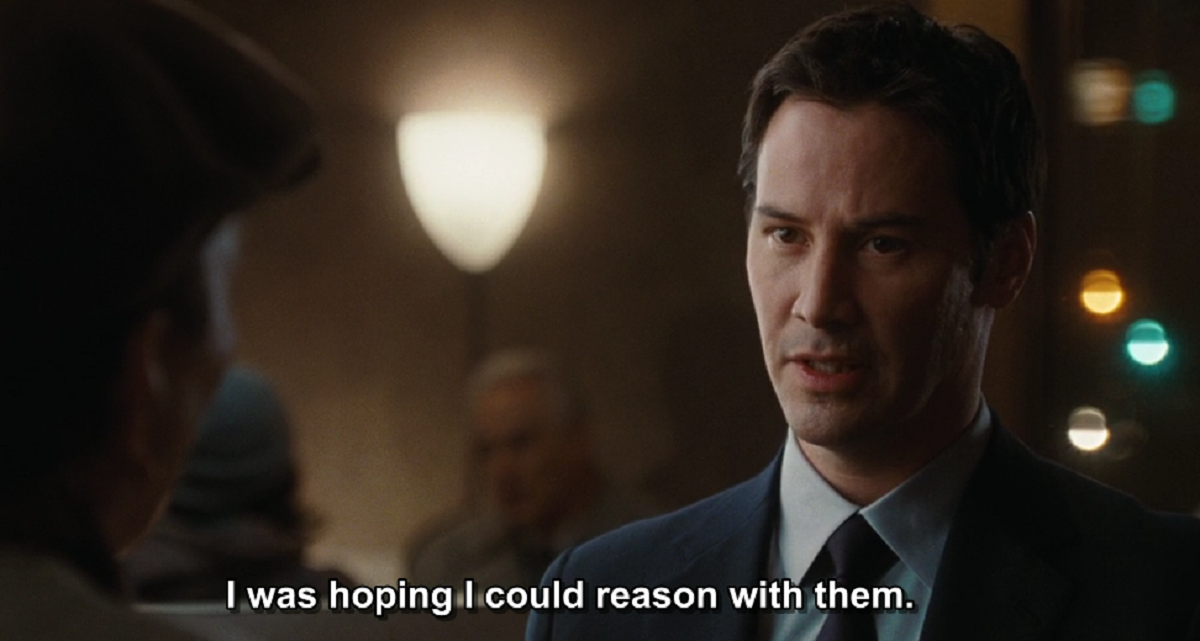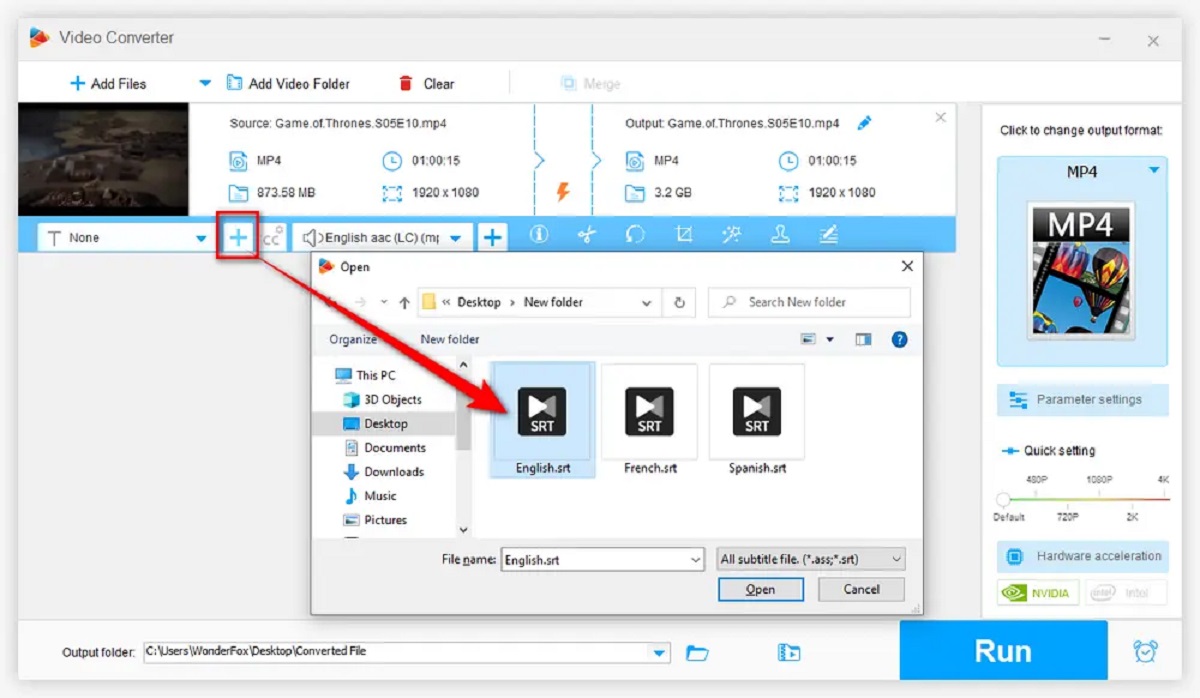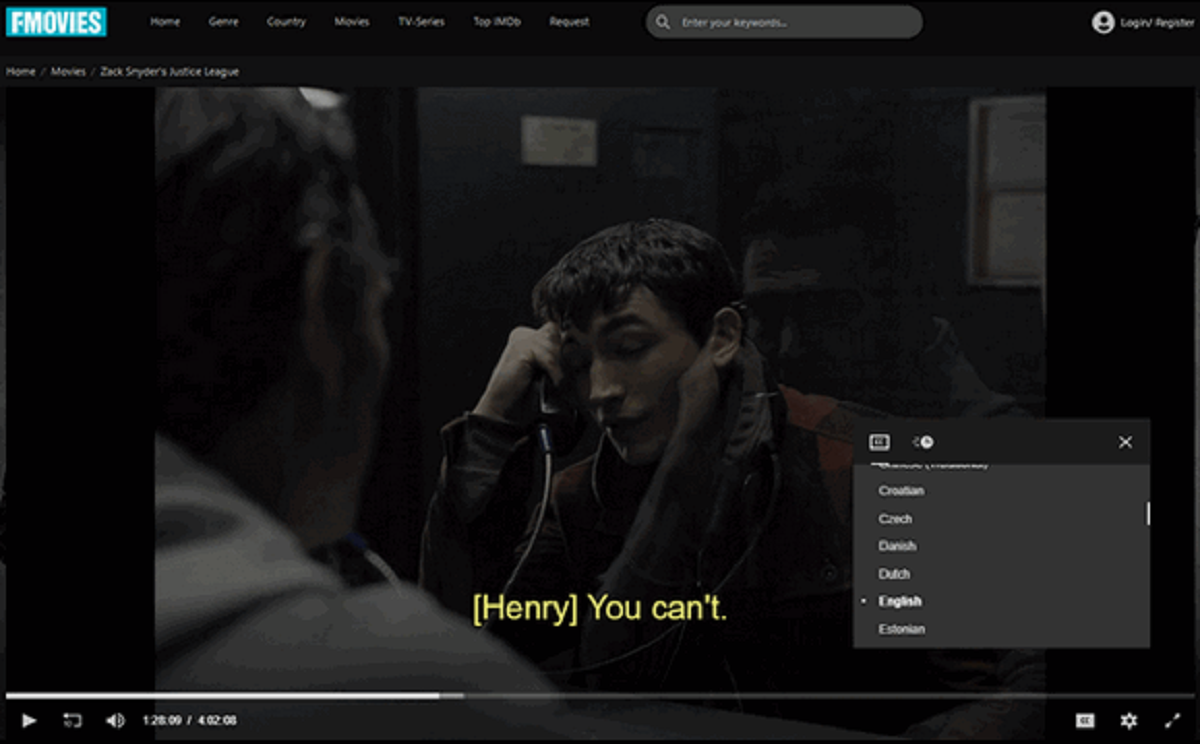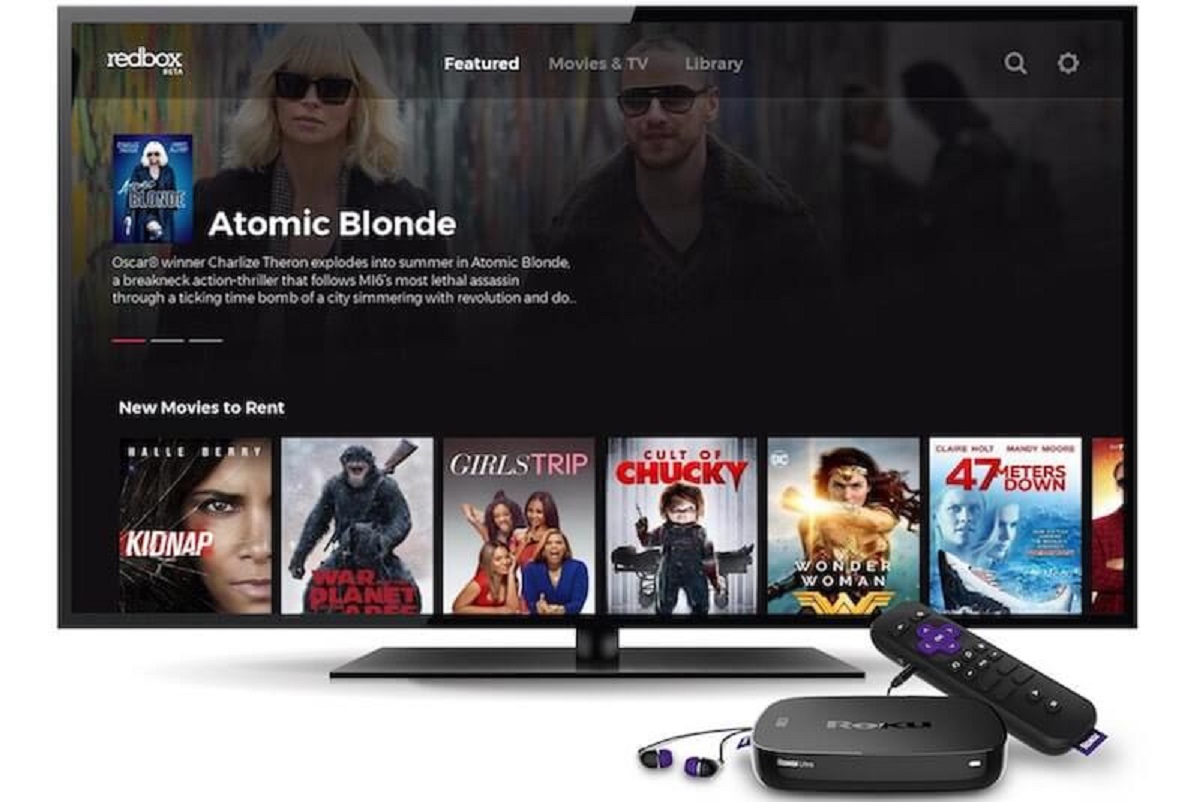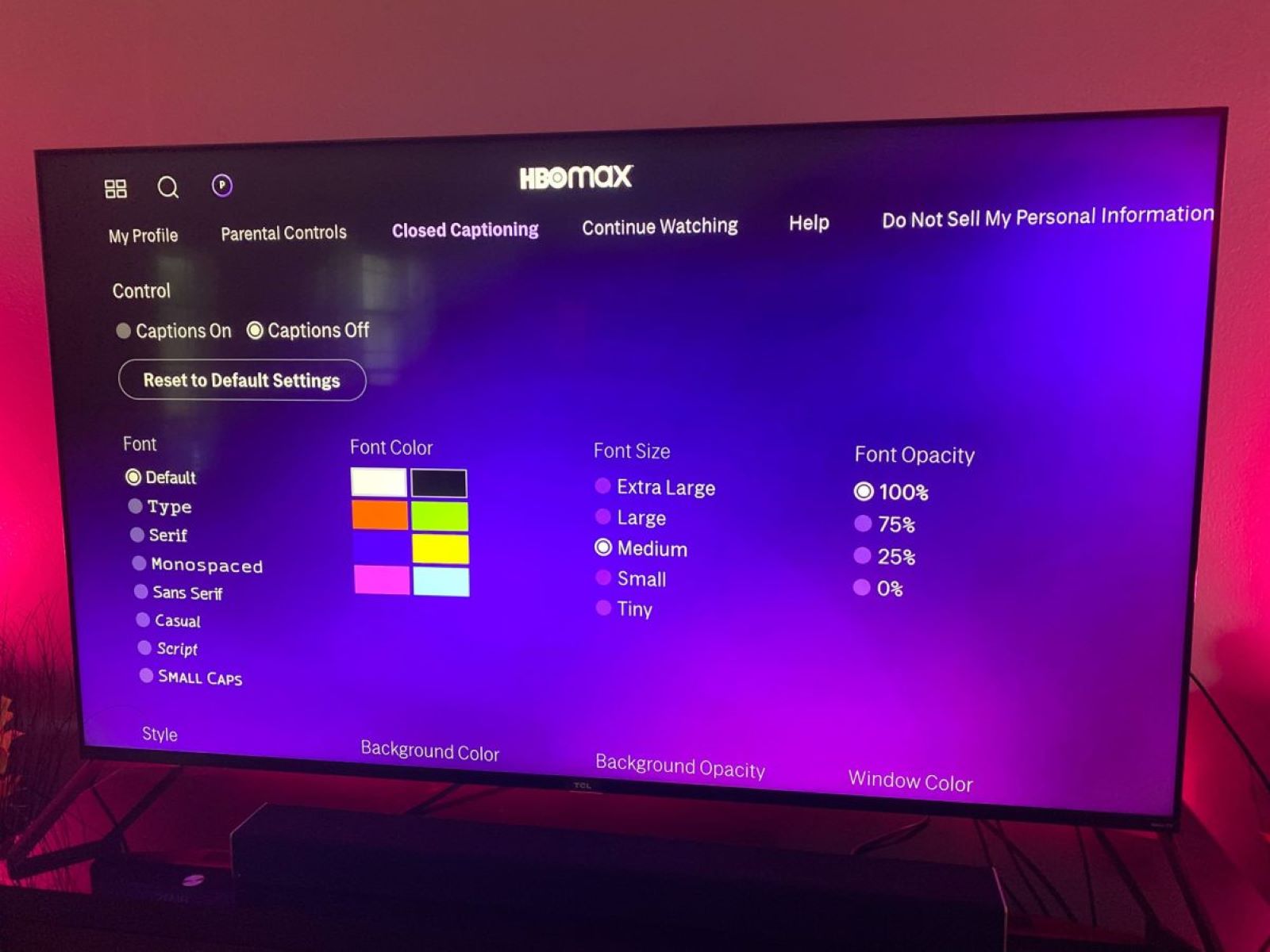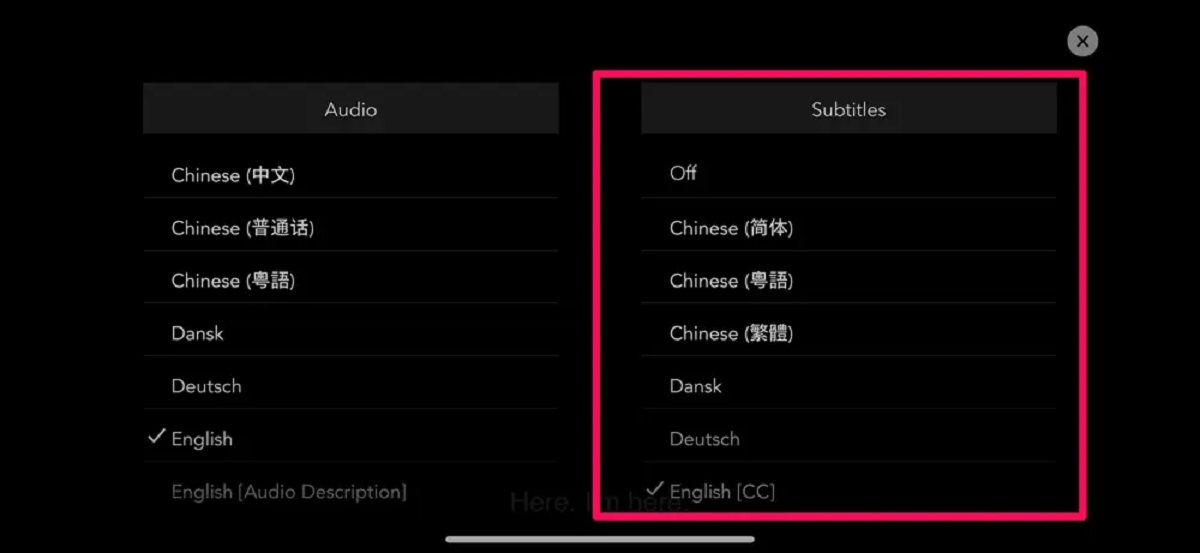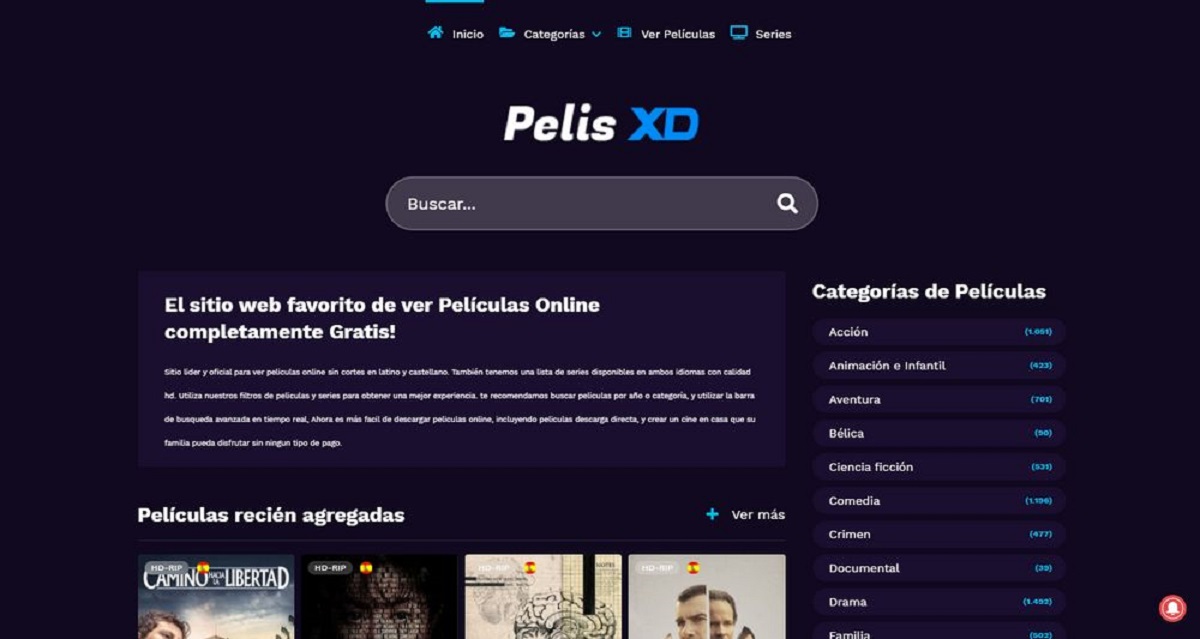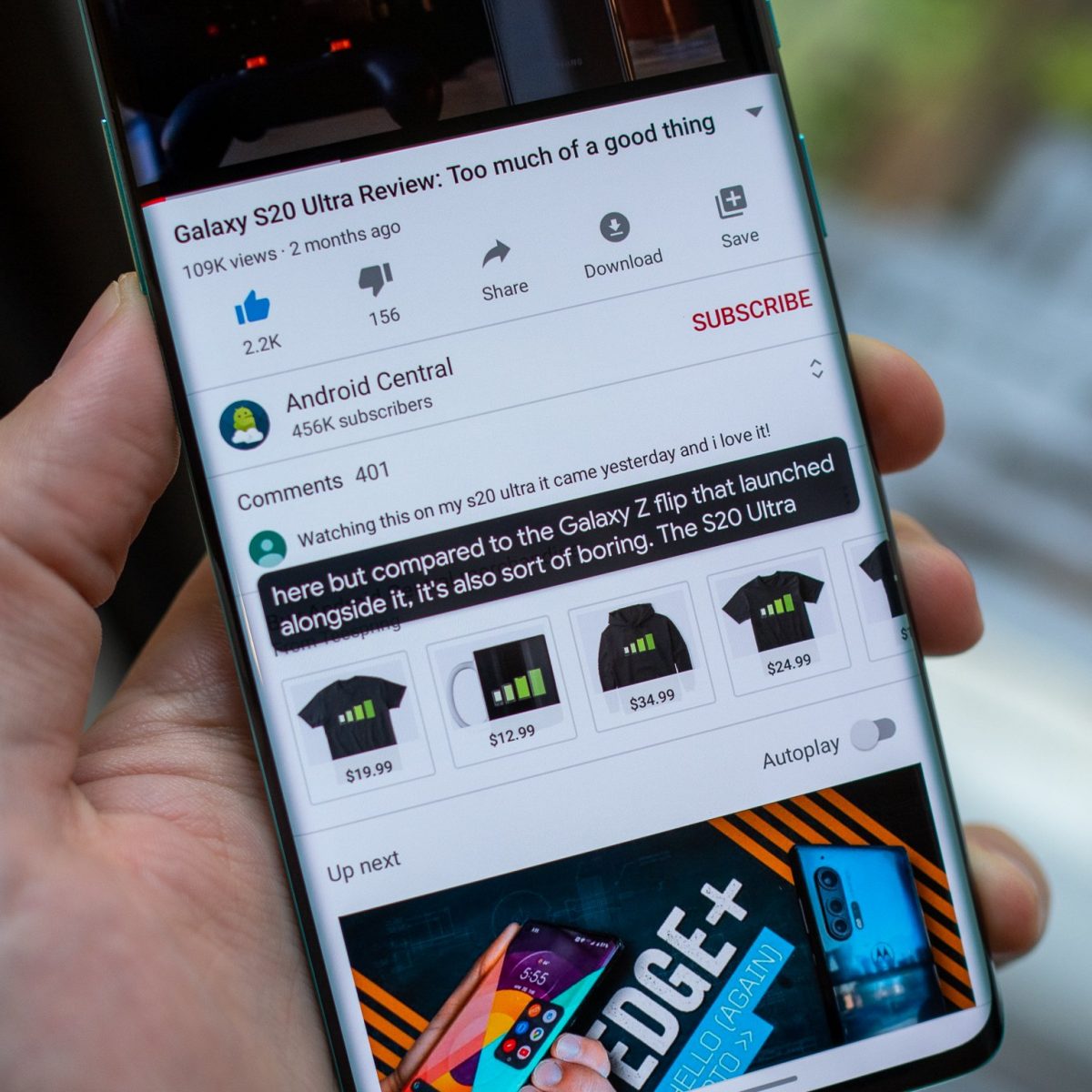Introduction
Movies have become a significant part of our lives, providing entertainment, storytelling, and a means of escape. However, not everyone can fully enjoy a movie without movie subtitles. Movie subtitles are an essential component of the film industry, providing written translations of dialogue and sound effects for viewers who may be deaf or hard of hearing, speakers of different languages, or those who simply prefer to read along.
Movie subtitles are displayed as text at the bottom of the screen, synchronized with the audio, making it easier for viewers to follow the story. They not only provide a bridge across language barriers but also enable individuals with hearing impairments to fully experience and appreciate the film.
With the widespread availability and advancements in technology, movie subtitles have become more accessible and effective. They ensure that movies can be enjoyed by a diverse audience, regardless of language or physical limitations. Subtitles also play a crucial role in promoting inclusive content and fostering a sense of belonging in the film industry.
In this article, we will explore the definition of movie subtitles, the different types available, their importance, how they are created, popular platforms and devices supporting subtitles, and helpful tips for watching movies with subtitles.
Whether you’re a movie enthusiast or someone who relies on subtitles for a better viewing experience, join us as we delve into the fascinating world of movie subtitles, their significance, and the challenges involved in creating accurate and accessible subtitles for a global audience.
Definition of Movie Subtitles
Movie subtitles are text-based translations of the spoken dialogue and sound effects in a film. They are typically displayed at the bottom of the screen, synchronized with the audio, to help viewers understand and follow along with the movie. Subtitles can be in the same language as the dialogue, providing a written representation of the spoken words, or they can be in a different language, offering a translation for viewers who do not understand the original language.
Subtitles not only convey the dialogue but also include additional information such as sound effects, music cues, and speaker identification. They provide a way for viewers to comprehend the nuances of the film and capture the intended meaning despite linguistic or auditory barriers.
The primary purpose of movie subtitles is to make movies accessible to a broader audience. People who are deaf or hard of hearing can rely on subtitles to understand the dialogue and fully engage with the movie. Additionally, subtitles enable individuals who are non-native speakers or unfamiliar with the original language to enjoy and comprehend the movie. They bridge the gap between different cultures and languages, allowing for a more inclusive cinematic experience.
Movie subtitles can be displayed in various formats, depending on the viewing medium and personal preferences. They can be presented as open captions, which are embedded within the video and cannot be turned off, or closed captions, which viewers can enable or disable as needed. Closed captions give viewers the flexibility to choose whether they want to read the subtitles or not, making movies more accessible to a wider range of individuals.
Moreover, subtitles can also be displayed in different colors, sizes, and styles to enhance visibility and readability. These visual elements ensure that the subtitles do not obstruct the on-screen action and are easily distinguishable from other text or graphical elements.
Overall, movie subtitles serve as a valuable tool for communication, cultural exchange, and inclusivity in the film industry. They contribute to a more immersive and meaningful movie-watching experience, breaking down language barriers and fostering a deeper understanding of diverse storytelling.
Different Types of Movie Subtitles
Movie subtitles come in various types, each serving a specific purpose and catering to different viewer preferences. Let’s explore some of the common types of movie subtitles:
- Hardcoded Subtitles: Hardcoded subtitles, also known as burned-in subtitles, are permanently embedded into the movie video. They cannot be turned off or customized by the viewer. This type of subtitle is commonly used when distributing movies on physical media or streaming platforms where customization options are limited.
- Closed Captions: Closed captions are a form of subtitle that can be enabled or disabled by viewers. They provide a comprehensive rendering of the dialogue, sound effects, and other audio elements. Closed captions are particularly valuable for individuals who are deaf or hard of hearing, as they allow them to understand the movie through written text.
- Open Captions: Open captions are similar to closed captions but are permanently visible on the screen without the option to turn them off. Open captions are commonly used in film festivals, theaters, and special screenings where accessibility is prioritized for all viewers. They ensure that everyone can understand the dialogue and enjoy the movie, regardless of their hearing abilities.
- Translated Subtitles: Translated subtitles are used when the original language of the movie is different from the language spoken by the target audience. These subtitles provide a textual translation of the dialogue, allowing viewers to understand and follow along. Translated subtitles are essential for foreign films and for reaching global audiences.
- Captioned Songs: Captioned songs, also known as lyrical subtitles or karaoke-style subtitles, are used in movies that feature songs with significant lyrics. These subtitles display the lyrics of the song, enabling viewers to sing along or better understand the meaning of the music. Captioned songs enhance the enjoyment and engagement of musical sequences in movies.
- Descriptive Subtitles: Descriptive subtitles are designed to provide additional information beyond the dialogue. They include descriptions of non-verbal sounds, background noises, and other audio cues that contribute to the movie’s atmosphere. Descriptive subtitles are beneficial for individuals who are blind or visually impaired, offering a more immersive cinematic experience.
These are just a few examples of the types of movie subtitles available. Depending on the movie, the target audience, and the accessibility requirements, different types of subtitles can be used to ensure optimal viewing experiences for all viewers.
Importance of Movie Subtitles
Movie subtitles play an integral role in the film industry, serving as a bridge to connect viewers with the story and promoting accessibility, inclusion, and cultural exchange. Here are several key reasons why movie subtitles are important:
- Accessibility: Movie subtitles provide accessibility to viewers who are deaf or hard of hearing. By conveying the dialogue and sound effects through written text, subtitles ensure that individuals with hearing impairments can fully comprehend and enjoy the movie. Subtitles empower them to participate in the cinematic experience without relying solely on audio cues.
- Language Inclusion: Movie subtitles make films accessible to a global audience by providing translations of the dialogue. Non-native speakers, language learners, and viewers from different countries can enjoy movies in their preferred language, breaking down language barriers and fostering cultural understanding.
- Enhanced Comprehension: Even for viewers who are fluent in the movie’s original language, subtitles can enhance comprehension. They help in deciphering accents, understanding complex dialogue, and catching subtle nuances that may be missed in spoken conversations. Subtitles ensure that the intended meaning and emotions of the movie are accurately conveyed.
- Improved Engagement: Subtitles encourage active engagement with the movie. By reading the text while watching, viewers are more likely to stay focused and immersed in the storytelling. Subtitles also facilitate a deeper appreciation for the dialogue, music, and sound effects, leading to a more enriching movie-watching experience.
- Cultural Exchange: Subtitles enable the distribution and appreciation of movies from different cultures. They allow foreign films to reach wider audiences globally, promoting diversity and cross-cultural exchange. Through subtitles, viewers can explore and appreciate the unique perspectives and storytelling styles of different regions.
- Inclusive Viewing Experience: Subtitles contribute to creating an inclusive environment in the film industry. They ensure that movies are accessible to individuals with various disabilities, including hearing impairments and visual impairments. By making movies accessible to all, subtitles foster a sense of belonging and representation for diverse audiences.
Overall, movie subtitles are crucial in making films more accessible, inclusive, and enjoyable for all viewers. They enable individuals with hearing impairments to fully engage in the cinematic experience, allow non-native speakers to enjoy movies in their language, and promote cross-cultural understanding and appreciation of diverse storytelling.
Accessibility and Inclusion with Movie Subtitles
Movie subtitles play a vital role in promoting accessibility and inclusion within the film industry. They provide a means for individuals with hearing impairments, language barriers, or different learning preferences to fully engage with and enjoy movies. Here are several ways in which movie subtitles contribute to accessibility and inclusion:
- Hearing Accessibility: Movie subtitles ensure that individuals who are deaf or hard of hearing can follow and understand the dialogue and audio elements of a movie. By converting spoken words and sound effects into written text, subtitles provide an equal opportunity for all viewers to experience and appreciate the film.
- Language Inclusion: Subtitles break down language barriers by offering translations of the dialogue. They cater to non-native speakers, enabling them to understand and enjoy movies in their language of choice. Subtitles facilitate cross-cultural communication and allow films to reach a wider global audience.
- Visual Accessibility: Subtitles also benefit individuals with visual impairments or cognitive disabilities. By providing a visual representation of the dialogue and sound effects, subtitles offer an alternative sensory experience, ensuring that these viewers can still engage with the movie’s narrative and comprehend the story.
- Learning Support: Subtitles can assist individuals who are learning a new language or improving their language skills. By reading subtitles along with the spoken dialogue, viewers can reinforce vocabulary, pronunciation, and sentence structure. This educational aspect of subtitles enhances the learning experience and facilitates language acquisition.
- Inclusive Filmmaking: The inclusion of subtitles in movies reflects a commitment to fostering diversity and representation within the film industry. It ensures that individuals with disabilities or language differences can fully participate in and contribute to the cinematic arts. Subtitles promote the creation of inclusive content and contribute to a more accessible and representative film landscape.
- Social and Emotional Impact: By making movies accessible to a broader audience, subtitles provide a sense of belonging and representation. They allow individuals from different backgrounds and abilities to connect with and be part of shared cultural experiences. Subtitles also promote empathy and understanding by showcasing diverse stories and perspectives.
Overall, movie subtitles are a powerful tool for fostering accessibility and inclusion within the film industry. They break down barriers, promote equal access, and create a more inclusive cinematic experience for individuals with hearing impairments, language differences, or other accessibility requirements. By embracing subtitles, movies can reach a wider range of viewers and contribute to a more diverse and equitable film culture.
How Movie Subtitles Are Created
Creating movie subtitles involves a meticulous process that ensures accurate translation, timing, and synchronization with the audio. Here is an overview of the steps involved in creating movie subtitles:
- Transcription: The first step in creating subtitles is transcribing the dialogue and other audio elements from the movie. A professional transcriber listens to the movie or uses a provided script to accurately capture the spoken words, sound effects, and music cues.
- Translation: If the movie is in a language different from the target audience, the transcribed dialogue is then translated into the desired language. Translators carefully adapt the meaning, tone, and cultural nuances of the dialogue to ensure an accurate representation for viewers who require subtitles.
- Timing and Synchronization: Once the transcription and translation are complete, the timing and synchronization of the subtitles are fine-tuned. Subtitle professionals use specialized software to break down the transcribed dialogue into individual lines or phrases and align them with specific timecodes corresponding to when they should appear and disappear on the screen.
- Text Formatting: Subtitle creators format the text to ensure optimal visibility and readability. They consider factors such as text size, font style, color, and positioning to ensure that the subtitles do not obstruct the visuals or interfere with the overall movie experience.
- Editing and Proofreading: The subtitle files undergo thorough editing and proofreading to ensure accuracy, consistency, and proper grammar and punctuation. This ensures that the subtitles provide a reliable and enjoyable viewing experience for the audience.
- Quality Assurance: After the initial creation and editing process, the subtitle file is reviewed multiple times to ensure that the timing, synchronization, translation, and formatting are all correct. This quality assurance step is crucial in eliminating errors and ensuring that the subtitles are of the highest quality.
- Delivery and Distribution: Once the subtitles are finalized and quality checked, they are embedded or attached to the movie file. This file, along with its subtitles, can be distributed through various formats, such as physical media, streaming platforms, or online video-sharing platforms, making the movie accessible to a broader audience.
It is important to note that professional subtitle creators possess expertise in language translation, audio synchronization, and subtitle formatting. Their knowledge and attention to detail are crucial in creating subtitles that accurately convey the dialogue, sound effects, and intended meaning of the movie.
Overall, the process of creating movie subtitles involves transcription, translation, timing, formatting, editing, proofreading, and quality assurance to ensure the final product is of high quality and provides an excellent viewing experience for all viewers who require subtitles.
Challenges in Creating Accurate Movie Subtitles
While movie subtitles offer numerous benefits, their creation comes with several challenges that subtitle professionals must overcome to ensure accuracy and quality. Here are some of the common challenges encountered in creating accurate movie subtitles:
- Translation Accuracy: Translating dialogue from one language to another can be complex, especially when dealing with cultural nuances and idiomatic expressions. Subtitle creators must strive to accurately convey the intended meaning, tone, and cultural context of the original dialogue to ensure a faithful representation of the movie.
- Timing Adjustments: Achieving perfect synchronization between the spoken dialogue and the appearance of the subtitles can be challenging. Different languages may have varying word lengths and sentence structures, making it necessary to adjust the timing and duration of subtitles to ensure they align seamlessly with the audio.
- Text Limitations: Subtitles are typically displayed at the bottom of the screen, which imposes constraints on the amount of text that can be shown at once. Consequently, subtitle creators must condense dialogue and convey the essence of the spoken words within the limits of legibility and screen space.
- Character Limitations: Some languages, such as Chinese or Japanese, use character-based writing systems that can present challenges due to their higher density. Subtitle creators must find ways to adapt the translation while adhering to the character limitations to maintain legibility and on-screen readability.
- Technical Limitations: Certain technical limitations can affect the accuracy and presentation of subtitles. This includes restrictions on font styles, text sizes, and colors imposed by streaming platforms or video players. Adhering to these constraints while ensuring optimal visibility can be a balancing act for subtitle creators.
- Ambiguous Dialogues: In some movies, dialogues may intentionally contain ambiguous or imprecise language, leaving room for interpretation. Subtitle creators face the challenge of accurately capturing the intended meaning while avoiding potential misunderstandings or misinterpretations.
- Multiple Speakers: Movies with fast-paced dialogues involving multiple speakers can pose difficulties in assigning subtitles to the correct characters. It requires careful attention to detail and precise synchronization to ensure that the subtitles accurately reflect the dialogue and the speaker’s identity.
- Regional Dialects and Accents: Regional dialects and accents can significantly impact the accuracy of subtitles. Subtitle creators must be well-versed in the specific dialects or accents used in the movie and accurately capture and convey their unique linguistic characteristics.
Overcoming these challenges requires a combination of linguistic expertise, technical proficiency, cultural understanding, and attention to detail. Professional subtitle creators strive to navigate these obstacles, ensuring that the final subtitles accurately represent the movie’s dialogue and provide a seamless and enjoyable viewing experience for the audience.
Popular Platforms and Devices Supporting Movie Subtitles
Movie subtitles are widely supported by various platforms and devices, ensuring that viewers can enjoy subtitles across different mediums. Here are some popular platforms and devices that support movie subtitles:
- Streaming Platforms: Streaming platforms such as Netflix, Amazon Prime Video, Hulu, and Disney+ have made significant strides in supporting movie subtitles. These platforms offer a wide range of movies and TV shows with subtitles available in multiple languages. Users can easily enable or disable subtitles according to their preferences.
- Digital Video Discs (DVDs) and Blu-ray Discs: Physical media formats like DVDs and Blu-ray discs have long supported movie subtitles. Users can choose the desired subtitle language from the disc’s menu options or use the remote control to enable or disable subtitles during playback. These discs often provide multiple subtitle options for a more personalized viewing experience.
- Smart TVs and Set-Top Boxes: Many modern smart TVs and set-top boxes come equipped with built-in accessibility features, including support for movie subtitles. Users can easily enable subtitles through the TV or set-top box settings, allowing for a seamless viewing experience without the need for external subtitle sources.
- Mobile Devices and Tablets: Mobile devices and tablets offer a convenient platform for watching movies with subtitles on the go. Applications such as VLC Media Player, MX Player, and Plex support a wide range of subtitle formats and provide users with options to download and load subtitle files alongside their movie files.
- Computers and Media Players: Computers and media players, both software-based and hardware-based, provide extensive support for movie subtitles. Media players like VLC Media Player, Kodi, and Windows Media Player allow users to load external subtitles and customize subtitle settings, such as font style, size, and color.
- Online Video-Sharing Platforms: Platforms such as YouTube and Vimeo have implemented robust subtitle support, providing an opportunity for content creators to add subtitles to their videos. These platforms often offer automatic captioning tools and support for manually uploaded subtitle files, making videos more accessible to a broader audience.
It’s important to note that the availability and functionality of subtitles may vary depending on the specific platform, region, and content. However, as the demand for accessibility and inclusion in media continues to rise, more platforms and devices are adopting comprehensive subtitle support to cater to a diverse range of viewers.
Overall, popular platforms and devices are making significant efforts to ensure that movies and TV shows are accessible to all viewers by providing robust support for movie subtitles.
Tips for Watching Movies with Subtitles
Watching movies with subtitles can enhance the viewing experience, especially for individuals who benefit from or prefer subtitles. Here are some tips to make the most out of your movie-watching experience with subtitles:
- Choose the Right Subtitle Language: Select the subtitle language that you are most comfortable with or that best aligns with your needs. This ensures that you can fully understand and enjoy the movie without any language barriers.
- Ensure Correct Synchronization: Check the subtitle’s timing and synchronization with the movie. If you notice any discrepancies between the dialogue and the subtitles, adjust the subtitle delay in your media player settings to align them properly.
- Consider Font Style and Size: Adjust the font style, size, and color of subtitles to your preference, ensuring optimal visibility and legibility. Experiment with different settings to find what works best for you and enhances your viewing experience.
- Focus on the Visuals: While reading subtitles is important, try to balance your attention between reading and appreciating the visuals of the movie. Train your eyes to quickly scan the subtitles while still immersing yourself in the on-screen action and cinematography.
- Watch for On-Screen Actions: Keep an eye on the actions and expressions of the actors. Sometimes, visual cues can supplement or provide context to the dialogue, enhancing your understanding of the movie and the story.
- Stay Engaged and Patient: Reading subtitles may require more focus and attention, especially if you’re not accustomed to it. Stay engaged with the movie and be patient with your reading speed. Over time, you’ll become more adept at following the subtitles while fully enjoying the film.
- Use Subtitles for Language Learning: If you’re learning a new language, watching movies with subtitles in that language can be a helpful learning tool. Pay attention to the vocabulary, sentence structure, and pronunciation to improve your language skills while enjoying the movie.
- Explore Subtitle Customization: Many media players and streaming platforms offer subtitle customization options. Take advantage of these features to adjust subtitles according to your preference, such as changing the font, size, or position on the screen.
- Consider Closed Captioning: If you have hearing difficulties or prefer a more comprehensive subtitle experience, consider using closed captions. Closed captions provide additional information such as sound effects, speaker identification, and music cues, enriching your understanding of the movie.
- Don’t Be Afraid to Rewind: If you miss a subtitle or need to fully comprehend a dialogue, feel free to rewind and replay that particular scene. This allows you to catch up or fully grasp the context, ensuring you don’t miss any essential details.
By following these tips and adjusting the subtitles to your liking, you can fully immerse yourself in the movie while benefiting from the added comprehension and accessibility that subtitles provide.
Conclusion
Movie subtitles play a crucial role in making films accessible, inclusive, and enjoyable for a wide range of audiences. They provide a means for individuals with hearing impairments, language barriers, or different learning preferences to fully engage with and appreciate movies. Subtitles break down language barriers, increase comprehension, and foster cultural exchange, allowing for a more diverse and inclusive cinematic experience.
Movie subtitles are created through a meticulous process involving transcription, translation, timing, formatting, and quality assurance. Professionals in the field work diligently to ensure accurate and high-quality subtitles that accurately represent the dialogue and enhance the movie-watching experience.
Popular platforms and devices, such as streaming platforms, DVDs, smart TVs, mobile devices, and computers, have embraced the importance of movie subtitles and continue to offer robust support for subtitles. This widespread availability helps ensure that subtitles are accessible to viewers across various mediums and devices.
When watching movies with subtitles, it is essential to choose the right subtitle language, ensure proper synchronization, and customize the subtitles for optimal visibility. Engaging with the visuals, staying patient, and using subtitles as a language-learning tool can enhance the overall movie-watching experience.
In conclusion, movie subtitles have become an integral part of the film industry, breaking down barriers and ensuring that movies are accessible to all viewers. They serve as a powerful tool for inclusion and cultural exchange, allowing individuals from different backgrounds and abilities to connect and appreciate diverse storytelling. As the demand for accessibility and inclusion continues to grow, movie subtitles will play an increasingly pivotal role in shaping the future of cinema.







